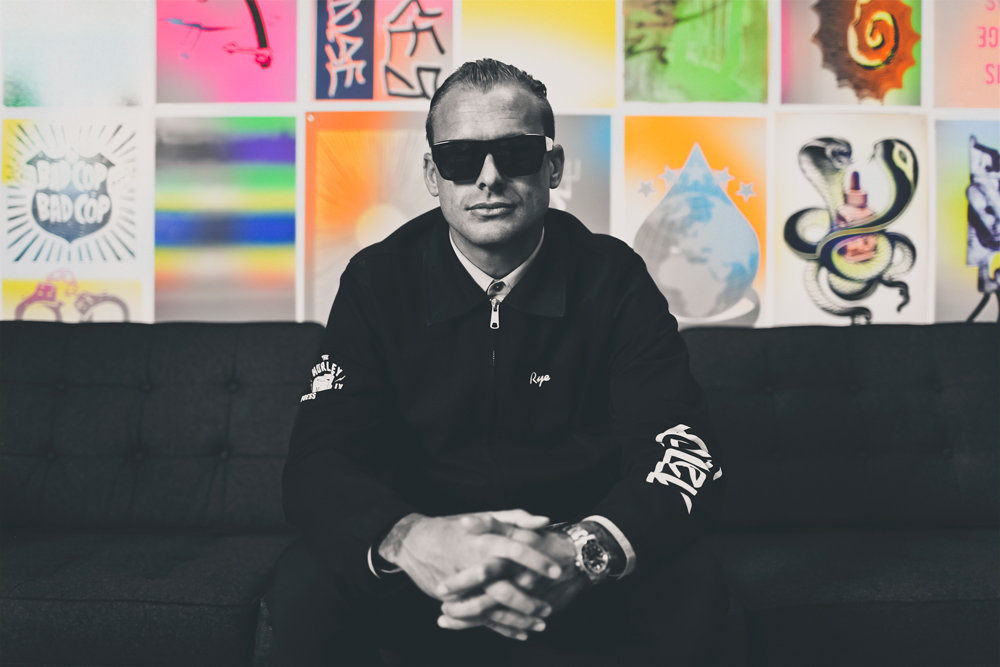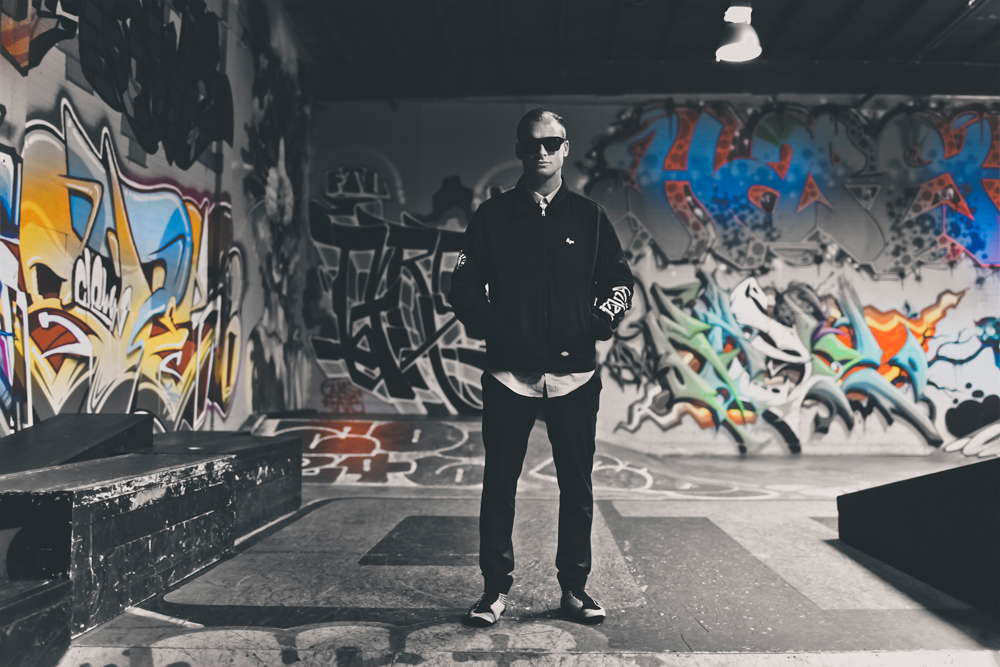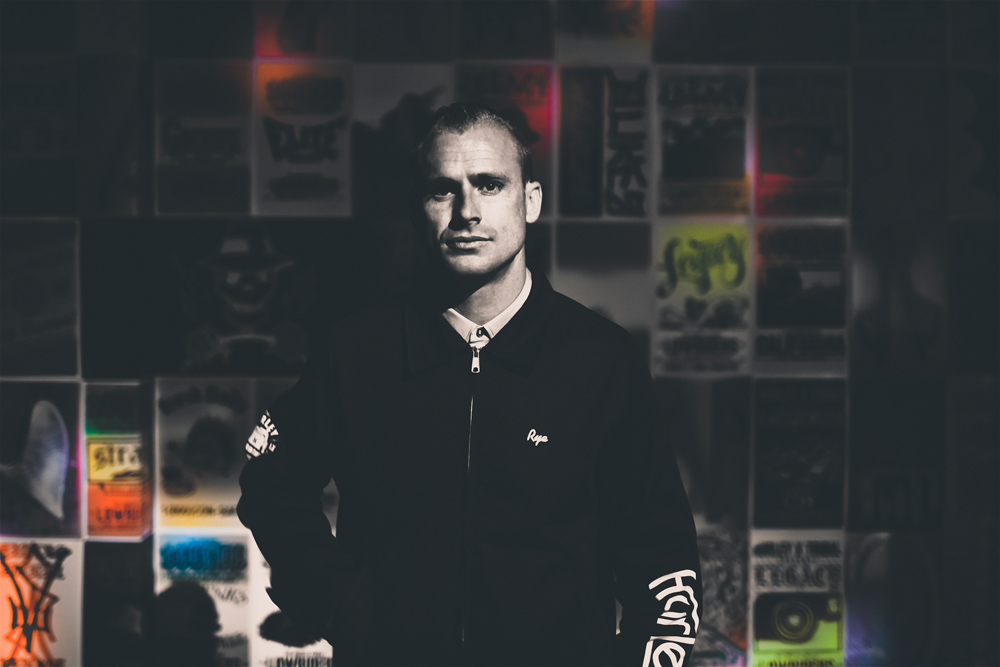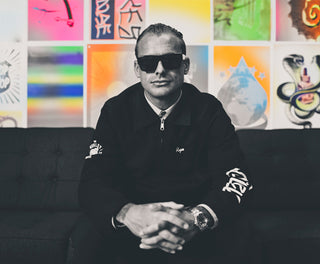Hurley is a brand I root for. Not for the logo, or the colors, or anything in particular. Not for its awesome line of board shorts or wet suits, either. But for its story. For the people behind the name and for the message it carries in the world of surf, and really, in every sense of the words creative and inspirational. Bob Hurley is a man I’ve only met twice, but both of those meetings were enlightening. Complimentary, engaging, and curious—all traits that have made his brand as successful as it has been over the last 15 years. Welcoming with an amiable presence, the head of the Hurley brand’s character has been a clear inspiration for his son, Ryan, now Creative Director of Product for their namesake family company.
Ryan, like his father, is charismatic. Passionate, engaging, and someone with a genuine spirit for creating product that solves problems. Designs with a purpose. Living up to the standards and blueprint his dad set out is a tough task in itself, but Ryan has been equipped most of his life. Starting out as a fit model for Billabong apparel when he was 4, the now 31-year-old has had years and countless hours under his belt working side-by-side with his father and learning all the ins-and-outs of the apparel industry. Able to design just about anything the brand produces, Ryan has sharpened his skills in every category Hurley has to offer, with his focus now being product innovation.
Under the Nike umbrella, Hurley has been blessed with access to some of the world’s leading technology in recent years. Fusing products like sandals with FREE outsoles and Phantom board shorts with flywire has allowed Hurley to continue setting benchmarks for what a surf apparel company should be. Aside from its clear understanding of product, a major part of the Hurley brand has been its continued support and development of the arts. A quick tour (see HERE) of its Costa Mesa-based campus will certainly leave you with a different perception of what you may have had and a clearer indicator of how important artistic foundations are to the brand.
During my recent sit-down with Ryan Hurley, he opened up about his family’s personal plights, his own goals and contributions to the Hurley brand and how surfing can one day become a more widely regarded sport in America.

Creative Director of Product, Ryan Hurley
LUIS RUANO: When did the idea of Hurley, as a brand, become a reality?
RYAN HURLEY: We did this brand Billabong for a while, since I was a little kid in the ’80s. When my dad was shaping surfboards a long time ago, he shaped boards for a professional surfer named Rabbit Bartholomew. Rabbit came out to Huntington Beach—my dad was part of a little local pack in Huntington Beach and they surfed just outside of the pier, sort of like an exclusive club. Rabbit came out and my dad kinda did a gesture to Rabbit, “Hey, you can come out here and surf with us!” and Rabbit was basically like, “I’m gonna stay and surf here with all the kids over here because that’s where I get my inspiration from.” And that little seed that he planted, a long time ago, actually turned into what became Hurley in 1999. That day was actually a long time coming. And it was a thought that he was developing for a long time about starting something new that was more about the kids and less about just being a surfer only.
When it came time to start the brand, Hurley, it was a big risk because we had a nice-sized brand with Billabong. We grew here, as well as internationally, and to basically just give that business back and start a new one was an incredible risk. We had conversations with our family, like, “Hey, we’re gonna go for this and we’re gonna put everything we have on the line for it. We’re gonna give this license back and start something totally new that’s unproven and we’re just gonna take a chance on it.” We were definitely gonna live pretty tight for a little while because we didn’t know where this was gonna go but we were very fortunate in the first year. Hurley’s business was exactly where it needed to be in order to keep everyone here employed… the core surf shops really embraced it. It was a little unsure, but then it was quickly well-received so [there] was just a quick moment of apprehension, but we felt right about it and said, “This is what we’re gonna do.”
What was your father’s role at Billabong?
It started out in Australia and my dad saw some of the Billabong product. The shorts were longer, they were a little more punk rock than what was typically happening in the surf world and so he was like, “These are cool, I’m gonna bring these to the United States and sell them here.” He got a hold of this guy who basically had a garage startup in Australia who started a nice little company over there and said, “Hey, let me bring some of this stuff to the US and sell it for you. I’ll be your licensing partner.” I don’t even think it was that strategic right away. He was just like let me buy some of your board shorts and sell them here. He said, “Okay, you gotta buy 300 units,” or 3,000 units, something like that. My dad got the money together from friends and family and purchased the product and sold it and eventually raised enough capital to do that again and became a licensee for Billabong and built it in North America and Internationally.
As a kid, it may not have affected you as much personally, but do you remember the toughest part of the transition from a steady company in Billabong to starting something from scratch without any guarantees?
For me personally, I’ve learned a ton from my father. He’s taught me everything in life and so I feel very fortunate that we have a close enough relationship, where even if it didn’t seem like it at times when I was younger, I was still learning from him. [If] I was rebelling, I was still learning whether I liked it or not, so I almost had blind faith that it was gonna work out because I believed in his vision that much to where I’d follow him off the edge of a cliff, you know? To me it was just like, “Of course it’s gonna work!” He was always very cool about letting me in on what he was thinking in business. Even when I was a really little kid, he would be like, “What do you think about this?” I was [maybe] 7. In my brain, I was like, “I have no business even having this conversation but I’ll tell you what I think!”
When it came time to put all the chips on the table and go all in—risk everything—it just seemed like that was the natural thing to do. So it didn’t really feel as risky as it was to me.

Inside the Hurley skate park at the company’s HQ
Those without knowledge would assume that just because your father’s the founder of the brand, it gave you an easier entry point to an executive level, but in this industry you have to know what you’re doing regardless. Can you talk a bit about that common misconception?
My dad and his brothers drove out from Rhode Island in a station wagon after their dad died. He was like 6 or 7 years old, with a pregnant mother... crazy, crazy story of making it out West and having nothing to making his dream happen… It’s the real American story. As far as working twice as hard to get what you need to get, I can relate to that. That’s how my dad raised me. He raised us to appreciate what we had and not take anything for granted. When we started out, we didn’t have a lot of money. He was a surfboard shaper. That’s like the least profitable profession you can have, you know? [laughs] Especially for the most work you put in. It’s hard work and you don’t get any money out of it. So to go from that to where he is now is totally a dream. I learned a lot from an early age, just having to work twice as hard because it was my dad’s thing, so I’m always very conscious that people might think I’m here because my dad’s the boss [laughs] but if you’ve ever worked together, in a family business, you know that you actually need to work twice as hard in order to be above reproach, because you’re going to be more criticized because you’re family.
That’s always been my approach—you gotta work twice as hard, especially if your dad’s the boss [laughs]. If you’re slacking off, you’re gonna get called out. But it never really felt like work. It was just our life. I grew up in it. It felt like it was what we were supposed to do. From a very early age, I was a fit model at 4 years old. Even though I was a little kid, I was always like a sponge, you know? Just soaking it all in. I think I’ve learned a lot through osmosis and just watching other people. Seeing successes and seeing failures and learning through my own failures, because I’ve got a lot of them.
What kind of jobs did you have early on at Hurley?
I grew up working summer jobs in the warehouse, packing boxes and shipping orders to sweeping the parking lot and stuff like that and then eventually a position opened up as an assistant designer when I was like 18 or 19 and that’s how I got my foot in the door in design. I’ve been doing that for 12 years.
What’s the most satisfying part of your job?
What comes the most naturally is just solving the puzzle. Sometimes that’s aesthetic, sometimes that’s performance, sometimes it’s just getting a point of view through an organization, but I think great design is good problem solving. For me, everything is a puzzle. There’s always a solution.
I like solving the really hard puzzles [that] I can’t do by myself, so I like getting all the people who can help solve [that] hard puzzle. Just aesthetic design doesn’t fascinate me that much, but when you can get someone to feel better, beyond just them feeling cooler style-wise, that’s a big benefit. If you can enhance someone’s performance or their experience or their connection to a brand, that’s a satisfying feeling. It’s like you solve the Rubix cube and you just wanna do it again. The things that I’m drawn to are the things that might pose the biggest challenge. Just trying to assemble a crew and tackle it.
Is there a moment you’d say has stood out amongst the rest? A particular achievement?
The biggest thing would be Phantom and board short innovation. That sort of paved the way to many things I’ve learned about design process and working with athletes. About enhancing sport and enhancing performance.
What makes Phantom so special?
In 2006, when we were developing it, everyone was pretty blocked off to the idea of innovation in board shorts. And it’s a piece of surfing equipment that you perform in that didn’t have any performance attributes at all. It had rigid fabric that soaked up a lot of water, a lot of embellishments were kind of a trend at the time, [and] all of these appliques and embroideries. It was holding you back. It was all about style, which is fine, but there was no performance benefit to any of the product and it was kinda like, “Well, these athletes are performing, but the products they’re wearing suck.” Rob Machado was one of the first athletes to start saying, “If you could me make lighter, faster, and more flexible, that would be huge.” We all surf and we knew what he was saying. That basically meant, let’s eliminate some distractions, let’s increase mobility, let’s reduce weight, let’s reduce drag. That led us down a path of development where there was nothing performance at all. We sourced materials and went through many rounds of construction with [this] material that was an incredibly light, 4-way stretch woven that was water-repellent, connected with a waistband that didn’t exist at that level before in the industry… It was a new approach. It was very minimalist. It was pretty much everything you need, but nothing you don’t. It paved the way for an entire performance classification in the sport of surfing. I’d like to believe it’s helped open up the doors to a broader audience. That’s probably the biggest one. At the time, there was only one machine in the world that could create material like that. Nowadays, finding a 4-way stretch woven that’s water-repellent is like bumping into a cotton twill. You can’t walk two blocks without seeing it.

Do you guys ever feel you have a responsibility to educate those unfamiliar with the sport and grow the culture in that sense?
We have a new partnership with the Association of Surfing Professionals, which is like the NFL for surfing. What’s happening there is that they’re basically packaging world tour events much differently than what’s happened before. They’re making it much more user-friendly for people that aren’t familiar with the sport [in] understanding how the competition takes place. So that’s already happening, and it’s gotten a lot better, so we’re excited about that. The athletes are doing things that have never been done before, so the progression of the athletes for the next generation is incredibly exciting. What they’re doing is so fascinating that if we just help connect that to a broader audience its pretty inspiring what these guys and girls are capable of. They’re elite athletes performing at pinnacle levels so it’s on us to help that get to people.
Most professional athletes start at a young age. Is surfing similar in that regard?
It’s one of those things where it takes a really long time to master. You can’t pick it up right away but you can get good quickly with practice. We have a program in Australia right now called the Hurley High Performance Center. It’s a collaboration with the Australian government, where we bring young athletes in and train them and equip them for the world tour of surfing. It’s incredibly successful and is basically writing the blueprint for surf athleticism as well as proper training and coaching. Everyone in the world tour of surfing now has coaches, some of them have nutritionists—it’s getting very serious. You know once one person has a coach, you gotta get a coach, because they have an advantage and so once that starts happening in the sport the level just gets raised. Boarding new athletes and getting people their first experience in the sport is a big thing for us, so we go around and do these tours at local surf shops where we post up for the day, bring our athletes out, bring kids to the beach, and push them into their first waves. It’s like the entry point to the sport. From that to the Hurley High Performance Center, there’s a journey these kids go on and if they pick surfing we’ll be there to help them along the way.
Youth baseball has seen a significant drop off in the last decade. Most say there are too many barriers and hoops to jump through to become a professional. Others complain the sport is too expensive in comparison to basketball, where all you really need is a ball and a hoop. How expensive is surfing as an entry level sport for a kid and is there money to be made once these youth athletes turn pro?
It’s a pretty lucrative sport for kids to pick up sponsorships at a young age and develop their careers pretty early. It’s a young sport. The average age of our surf team is 20 and there’s a lot of young athletes. They’re making good money. The prize money isn’t huge at all—it’s not like golf where you get last place and you’re still killing it [laughs]. The prize money is terrible, but sponsorship and endorsements [are] actually pretty good within the sport. The access into the sport—compared to football, or something like that—isn’t that expensive. The sport of surfing, if you solve for that, then you really solve for all water-based sports. That doesn’t mean we’re going to focus on wakeboarding or stand-up paddling, but if you solve for surfing you’ve got a pretty good solution for wakeboarding.
For years I’ve heard people complain when larger companies enter a new market—i.e. Nike in skateboarding. What do you say to those that might feel like the partnership with Nike back in 2002 somehow made Hurley less valid as a surf brand?
Is soccer less authentic now? Is basketball less authentic now? Is running less authentic now? Some of the ideals that might make people uncomfortable about that are pretty much extinct, if you look at some of the case studies. We actually approached Nike. Nike was at the top of the list. When my dad was cold calling because we needed to take our brand to the next level, it was growing so fast and we needed to raise capital. He didn’t wanna take out another loan and he said, “We did that already, I don’t wanna do that again!” So we needed a partner. We felt the best partner for sport, culture, and connecting with athletes and innovation and inspiration to kids was Nike. So that’s kinda how the deal got started. Him just cold calling and saying, “Hey, I want to take this thing to the next level, here’s what we got.” The idea of innovation and inclusion is ultimately what resonated with the Nike brand. When they go into a sport, they improve it.
That was in 2002, and we’re just now, I think, beginning to realize some of that vision as a brand. We still have a long way to go but you know, we’re getting there and we’re learning a lot along the way.
WORDS BY LUIS RUANO

